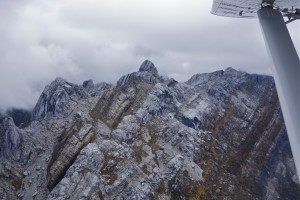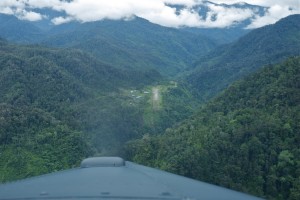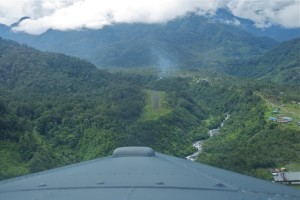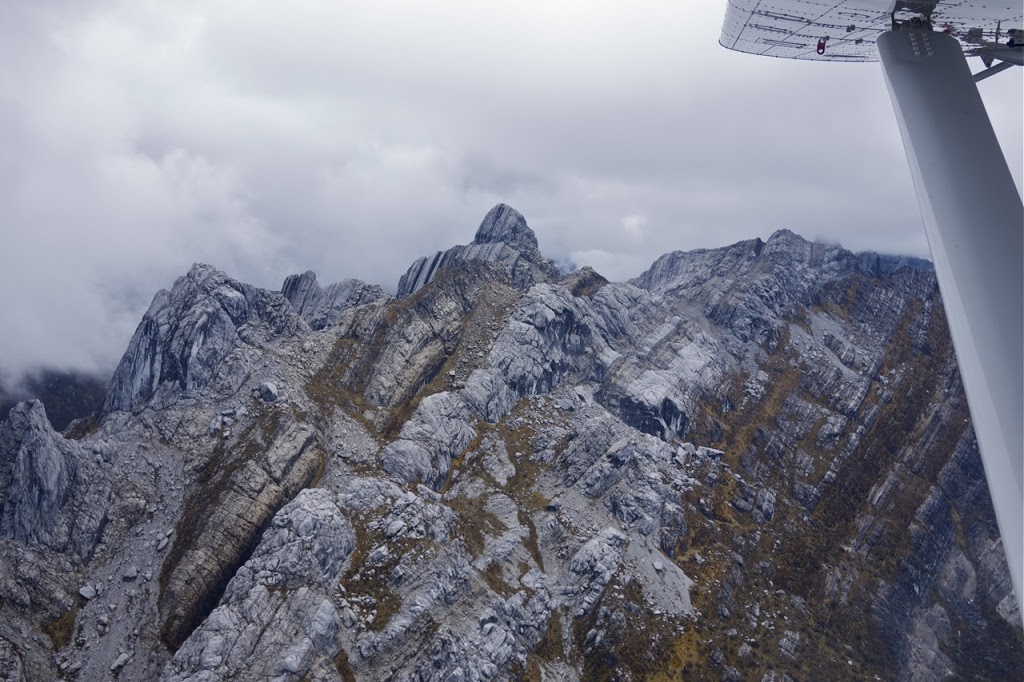Before being allowed to go solo in the mountains of Papua, every new pilot to an area first has to fly with another pilot who’s been based in that same area for a while. Firstly in the right hand seat, then left hand seat for take-offs and then for both landings and take-offs with that same pilot sitting in the right seat. I’ve just come to the end of my first week here in Timika, flying with Steve who’s been helping me get familiar with the local airstrips.
 |
| The dramatic mountains of Papua |
The main idea behind the additional training is to help get pilots familiar with both the routes and the airstrips we fly to most often. So far I’ve seen six different airstrips; Alama, Jila, Jita, Beoga, Doufu and Tsinga. Each has it’s own unique challenges and they are a mix of mountain and flatland airstrips. Thus far, most of the airstrips I’ve seen are technically easier than the ones I’ve flown to in Kalimantan, due to them being slightly longer or having an up-slope. However the location of them is considerably more dramatic with the surrounding terrain!
 |
| Approach into Alama, Papua |
 |
| PK-BVM parked up at Alama airstrip, Papua |
There’s a lot to take in when learning new routes, especially with the terrain in Papua which reaches just over 16,000ft on the peak of Puncak Jaya. It’s high enough to have snow on it which only serves to highlight the importance of using the anti-icing system for the pitot tube if flying in visible moisture (i.e. clouds/rain). Failure to do that can lead to the pitot tube becoming blocked which then effects your airspeed indicator. It’s exactly this that was partially to blame for the Air France Flight 447 crash back in 2009.
 |
| Puncak Jaya, Papua |
The other thing to consider is that if you’re going to be spending a lot of time above 12,000ft, oxygen should be used to prevent hypoxia. I’ll discuss this further in a future blog post but it’s yet another thing I’m having to learn about whilst flying out here in mountains of Papua.
 |
| Approach into Jila, Papua |
|
 |
| Tsinga (Mulu) airstrip, Papua |
It’s not been all plain sailing however as we lost a couple of days flying thanks to fuel contamination which necessitated an engineer draining and flushing out the aircraft’s fuel system. Before each flight, pilots should always drain off a small amount of fuel to check it’s ok and doesn’t contain any contamination such as algae, particles or water. Particles in the fuel have been an ongoing problem here in Timika which only seems to be effecting our aircraft. No other operators have reported any problems. We’re keeping a close eye on this one.
 |
| Approach into Doufu, Papua |
 |
| Pilatus Porter parked up in Doufu, Papua |
Papua is an island of massive contrast. Throughout the centre there are massive mountains which stretch from the east of Papua New Guinea all the way out to the west. North and especially south of these mountains it’s as flat as a pancake. It’s also steamy hot in those flatland airstrips and refreshingly cool up in the mountains. Landing in the morning it can be as low as 14 degrees Celsius; that can feel pretty fresh in just a thin white shirt!
 |
| PK-BVM parked up in Beoga, Papua |
Hopefully next week I’ll be able to get a bit more flying in. Either way, it’s a fantastic new challenge for me flying out here and I’m enjoying every moment of it!










thank you for the pictures! my father was the project manager when mulu airstrip was still under construction a few years back!
You can tell your father they did a really great job of the airstrip in Mulu (Tsinga). It’s probably one of the smoothest and best prepared ones we land on!
Cheers